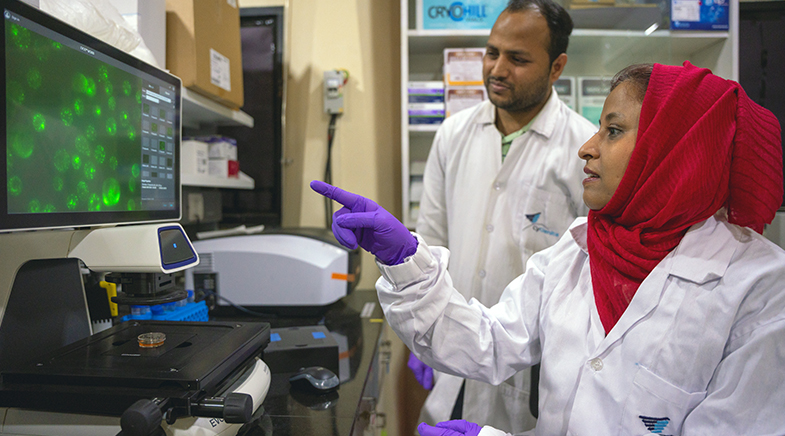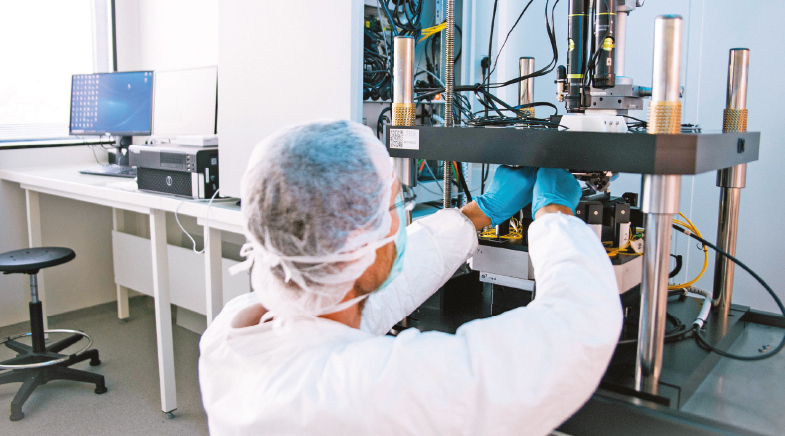Sea species show the way
-
- from Shaastra :: vol 01 issue 04 :: Jul - Aug 2022

It's not easy being a sea cucumber. The slow-moving, soft-bodied marine creatures are eaten with relish in parts of Asia, leading to the depletion of these organisms that are predominantly involved in cleaning up the ocean floor.
But a team of researchers made a startling discovery recently about the defence mechanism employed by sea cucumbers, so named because they look like cucumbers.
Animals such as sea cucumbers do not have adaptive immunity, and thus use a programmed immune system to react to a broad range of pathogens. Sea cucumbers survive in a hostile environment by producing a natural toxin called triterpenoid saponins, similar to the saponins many plants produce for protection.
The scientists wanted to investigate the genetic machinery that sea cucumbers used to produce saponins. "Saponins are high-value chemicals as they are seen to possess anti-cancerous and anti-fungal properties," says team member Ramesha Thimmappa of Amity University, Noida. "Our work is the first to shed light on how sea creatures make saponins."
The team, which included Thimmappa's colleagues from U.K.'s John Innes Centre (JIC), where he'd earlier worked, and scientists from China and the U.S., published a paper on this in Nature Chemical Biology in June. What helped the study was their 2018 work sequencing the genome of a sea cucumber species.
Sea cucumbers belong to a family called echinoderms. But they are the only echinoderms producing triterpenoid saponins, says JIC biology Professor Anne Osbourn, who led the team.
Many animals use toxins as chemical defences, but these toxins are usually obtained from food or produced by symbionts living inside these animals. Sea cucumbers, on the other hand, biosynthesise their own toxins, she says.
USE IN VACCINES
Saponins are medically important molecules because when they come in contact with sterols (like cholesterol in humans) on the membrane of a cell, they create pores on the cell surface, leading to cell destruction. This implies they can be used to destroy cancerous cells.
The molecule is also used as a vaccine adjuvant as it can help create holes on cell surfaces to push vaccines in. Many vaccines, including Novavax's COVID-19 jab and the recently-approved anti-malaria vaccine, use saponins as an adjuvant.
Sea cucumbers also shed their ability to make regular sterols and instead produce sterol variants to protect themselves from the toxic effects of their own chemicals. That is why sea cucumbers' cells are protected while the invading cells are destroyed, Thimmappa explains.
The work, Osbourn adds, has economic significance, since sea cucumbers are a delicacy in parts of Asia, and their extracts (of which saponins are important bioactive components) are valued for their medicinal properties.
"The discovery of key enzymes required for the early steps in saponin biosynthesis in sea cucumber should now expedite the discovery and characterisation of the remaining chemical steps necessary to make these potentially high-value chemicals so that they can be produced using plants or yeast more cheaply and help conserve sea cucumbers in their natural habitats," Osbourn observes.
Have a
story idea?
Tell us.
Do you have a recent research paper or an idea for a science/technology-themed article that you'd like to tell us about?
GET IN TOUCH














